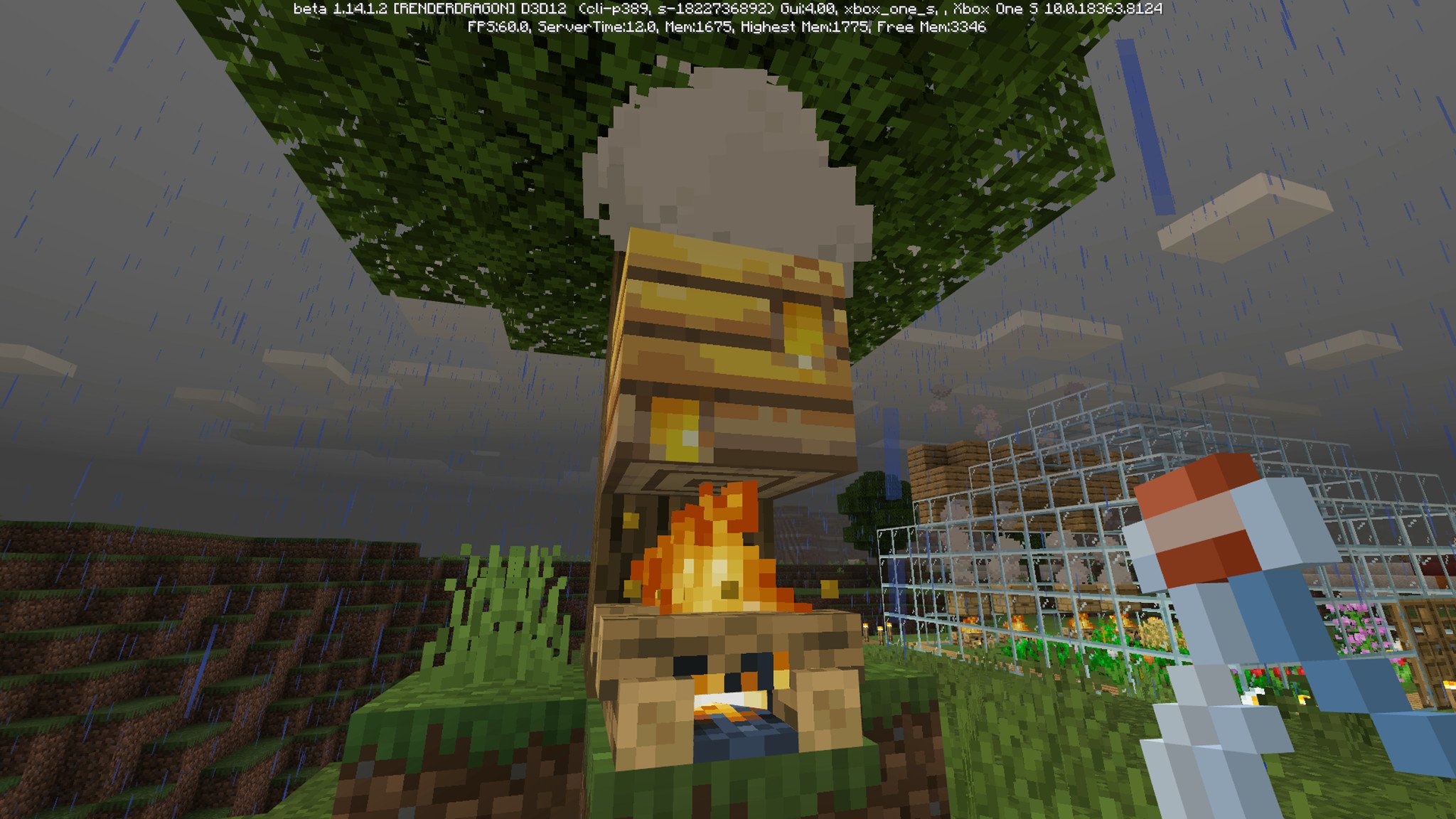Minecraft Guide to Honey Blocks: Ideas for redstone contraptions, builds, and more
The honey block adds some intriguing new mechanics to Minecraft. Here's how to take advantage.
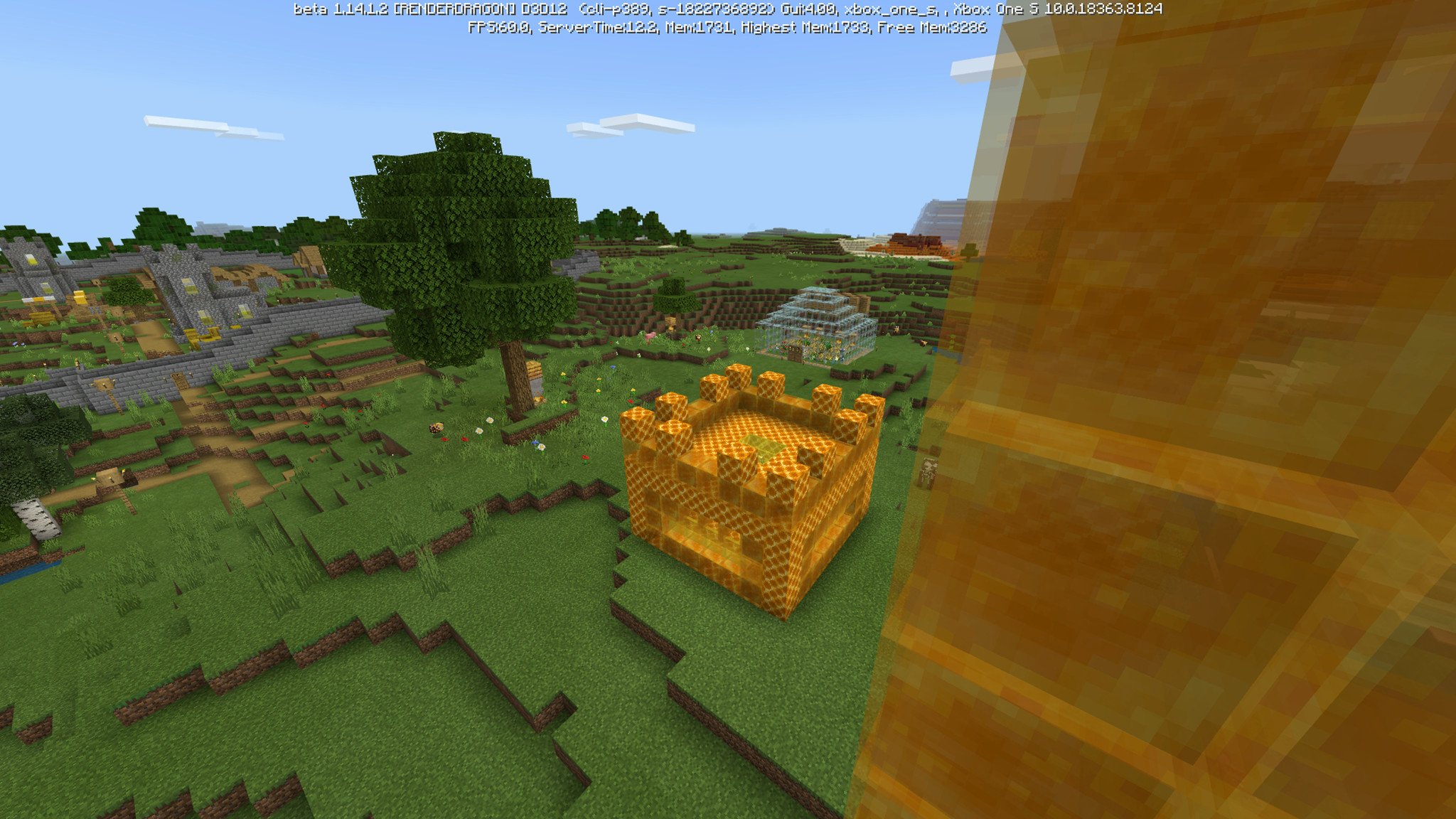
As part of the new Buzzy Bees update coming to Minecraft December 10, Mojang is introducing an all-new building block that can do a ton of neat things and could be an exciting new toy for lots of people. Second only to the new fuzzy bumbling bees, that are also being added to the game, honey blocks are pretty exciting. Here's everything you need to know.
What can honey blocks do?

The honey block is a versatile new block in Minecraft that adds never-before-seen mechanics, as well as a rehash of some existing ones. You craft it, you place it, and you…do what? There's a ton of ideas whirling around out there, and I've picked out a few to showcase here today. But first, a quick breakdown of the honey block and its capabilities, starting with how you get it.
- Find a beehive or bee nest filled with honey. When I say filled with honey, I mean practically dripping honey onto the floor.
- Approach the beehive or bee nest with some empty glass bottles. What better way to collect honey then with a container commonly used to store liquids and semi-liquids?
- Use an empty glass bottle on the beehive or bee nest. You should notice that your empty glass bottle has now become a bottle of honey.
- Repeat steps 1 & 2 three more times. You'll need a total of four honey bottles to craft a honey block.
- Combine your honey bottles in a crafting table. Do your crafting magic and collect your honey block. You'll also get four empty glass bottles in return, ready to be filled with more honey.
Now that you have some honey blocks, it's time to learn about what they can do.
- Honey blocks are like other building blocks. They can be placed basically anywhere, just like other building blocks, and are unaffected by gravity, unlike gravel or sand.
- Honey blocks are defined by their stickiness. Honey blocks tend to stick to everything. Unlike slime blocks, which only stick to other building blocks, honey blocks stick to items, players, and mobs in addition to building blocks. Terracotta blocks and slime blocks are the only exceptions.
- Honey blocks can move up to 12 blocks at once. Whenever a honey block is used in conjunction with a piston or sticky piston, it can move up to 12 blocks simultaneously, as long as no other blocks are adjacent to those 12. This is the same as sticky pistons or slime blocks.
- Honey blocks affect the player and mob movement. It's not possible to sprint while on honey blocks, and walking speed is slowed similarly to soul sand.
- Mobs try to avoid walking on honey blocks. This may be a side effect of their stickiness, but mobs, in general, try to avoid walking on honey blocks. They will if no other option is presented to them, but it's not their first choice.
Note: In my testing of the latest beta of the Buzzy Bees update, this still doesn't appear to be working as it should. As far as I can tell, mobs still treat honey blocks like any other block, even though this is supposed to be a characteristic of the honey block. This may change in the future.
- Honey blocks severely handicap jumping while on them. More specifically, players and mobs will be unable to scale a single standard block while standing on top of the honey. Half slabs are still fair game, so it's not impossible to escape.
- Honey blocks affect downward movement. Whenever a player or mob is falling, coming into contact with honey blocks will slow their movement down similarly to ladders or sinking into water.
- Honey blocks reduce fall damage. Not only does falling directly onto a honey block reduce the corresponding damage by up to 80%, but the player or mob will not bounce at all. This is in stark comparison to slime blocks, which reduce fall damage by 100% but with a significant amount of bounce.
- Honey blocks don't transmit redstone signals. One of the biggest appeals of the honey block is how it's similar to slime blocks, but mostly because of its key differences. Because honey blocks are considered transparent, like glass, redstone signals do not pass through them. This is not the case with slime blocks.
- Honey blocks do not stick to slime blocks. This is a significant change that Mojang made in response to feedback. Honey blocks and slime blocks do not stick together, which is a massive boon for people wishing to make compact redstone systems.
- Bees will occasionally land on honey blocks. Bees like honey, and by extension also like honey blocks. When honey blocks are nearby, bees may land on them for a few minutes and attach to the side. Are they eating the honey? I don't know, but it's kind of cool either way.
In a nutshell, all of these different traits add up to a unique proposition. There are many possibilities, but one of the most significant applications for the honey block will undoubtedly be in the magical and complicated world of redstone.
Using honey blocks in redstone contraptions and machines
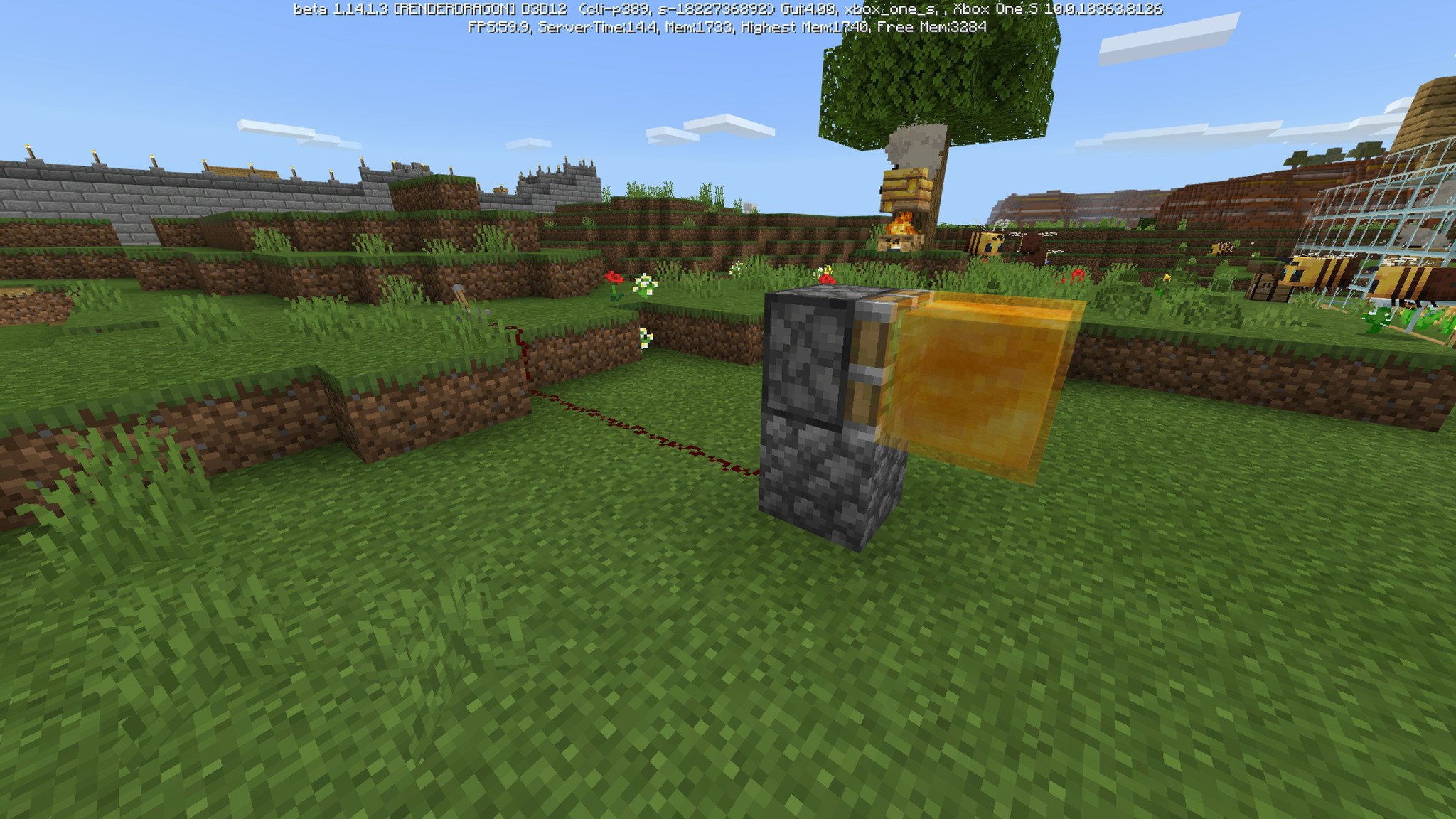
Redstone represents the culmination of everything that makes Minecraft supremely unique. This is far from that architecturally-accurate medieval castle you spent three months building. Now, you can have a modern super home with working automatic doors and lights. Plus, there's a fully functioning metro connecting multiple sections of the map, and secret trapdoors and rooms to boot. Honey blocks promise to be an intriguing addition for people devoted to redstone, mostly due to the comparisons drawn to slime blocks. Quick recap:
- Honey blocks can effectively replace slime blocks in almost any redstone contraption. Both blocks stick to everything except immovable blocks like bedrock, terracotta blocks, and each other. Honey blocks are a low-cost alternative for the early game if a player is interested in designing complicated Redstone contraptions or wants automatic doors.
- Redstone signals do not pass through honey blocks. Controversially, redstone signals do pass through slime blocks.
- Unlike slime blocks, players, mobs, and items stick to honey blocks. This ability has several interesting effects on Redstone contraptions, which are detailed further below. Plus, it is the most significant difference between slime blocks and honey blocks.
Let's look at some ideas for what you can do with honey blocks.
All the latest news, reviews, and guides for Windows and Xbox diehards.
Conveyor belts
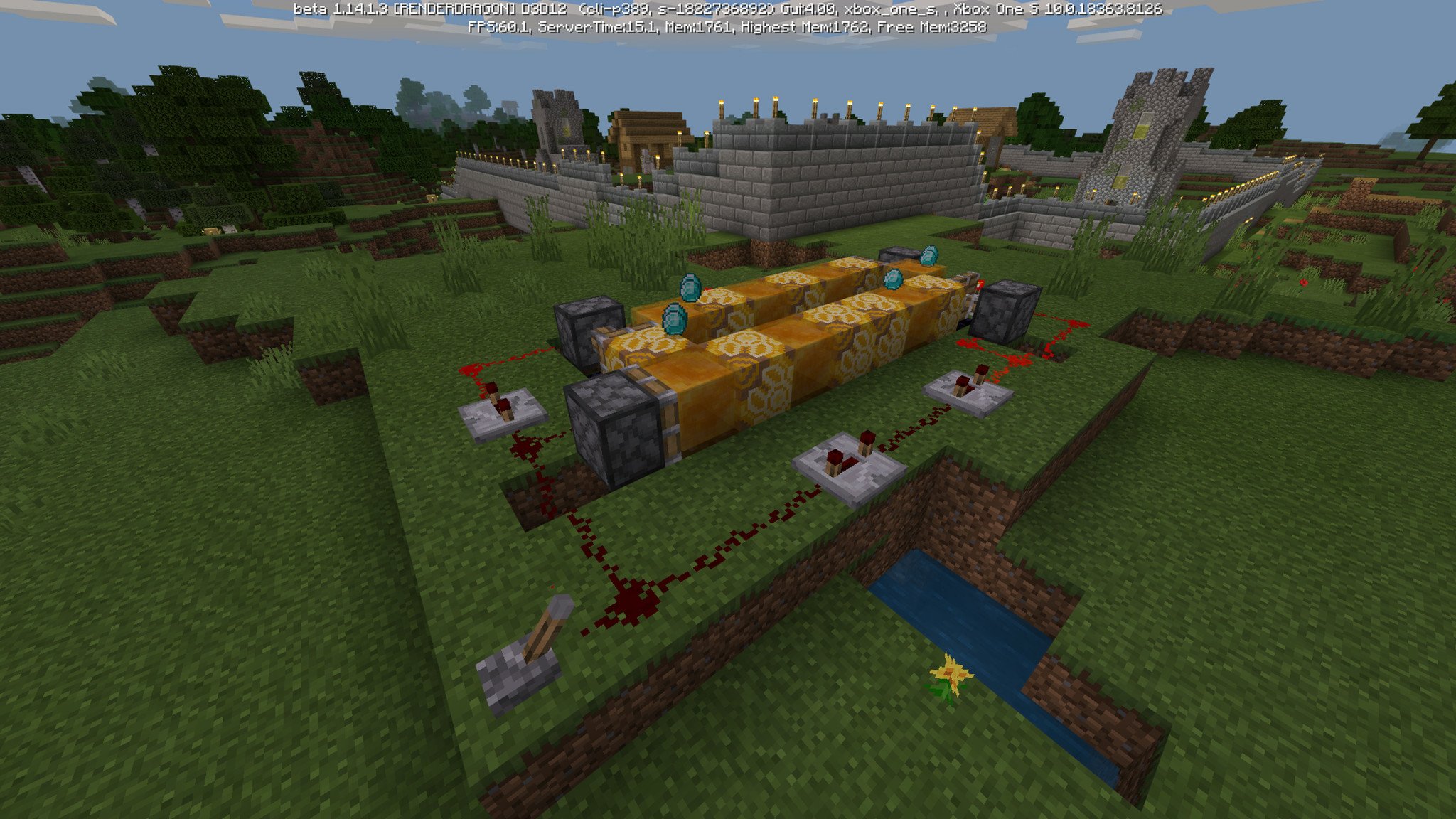
The issue with building conveyor belts in the past has been the strange workarounds players need to employ to make it functional. Items and mobs don't stick to slime blocks. Players have to use other methods like cauldrons or more mundane things like minecarts and chests. A proper, functioning conveyor belt is now possible with honey blocks, as discovered by Reddit user HasseHynd.
The idea behind the conveyor belt is that you have a system of alternating honey and terracotta blocks with pistons at every junction. You set up your Redstone wires to keep the pistons running on a loop so that they continuously push the terracotta blocks around the next section of the conveyor belt. Since terracotta blocks stick to neither pistons nor honey blocks, you can build a fully functioning conveyor belt that only adheres to items, mobs, and players.
Is this the most efficient method of moving items from one place to another? Not exactly, but this is yet another way players can continue making awesome creations. Anyone up for recreating Factorio in Minecraft?
Flying machines
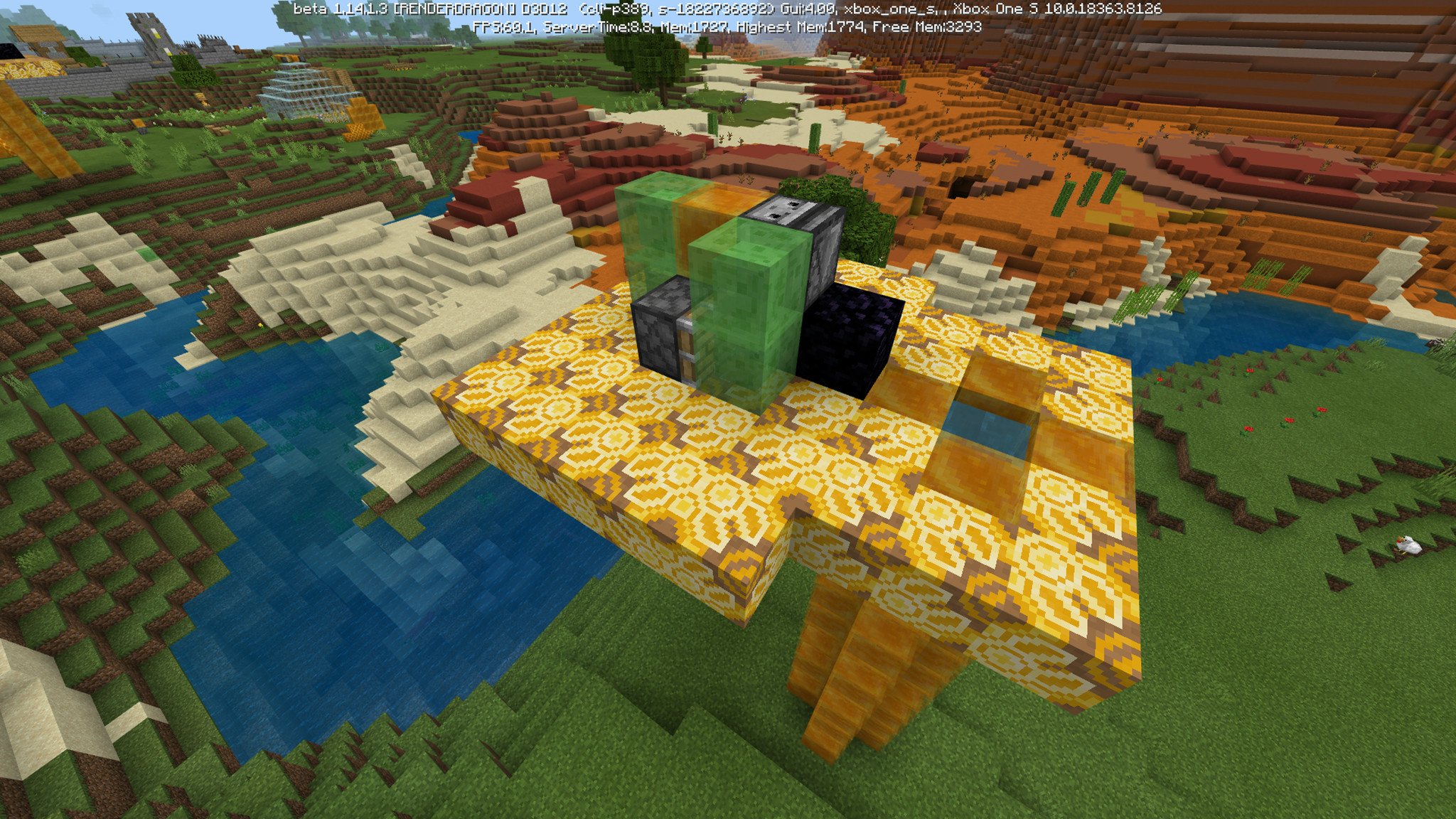
That title is accurate. In all current editions of Minecraft, you're able to construct an actual flying machine. I wouldn't call it a plane, exactly, but it is something you can build to travel in a single direction virtually endlessly. It's relatively limited in that it can only go in a single direction horizontally, and isn't able to move vertically from the point you build it. It's still a fun build that is more efficient for traveling long distances.
The premise is simple. You use slime blocks and pistons to create a perpetual cycle of movement. Pistons push the slime blocks forward while opposing pistons pull the slime blocks towards them. Set up correctly with an observer, you can create a loop in which the piston/slime block combination pulls itself forward for eternity. Since none of the components are affected by gravity, you essentially have a flying machine!
In this contraption, honey blocks aren't the best substitute for slime blocks, since Redstone currents don't travel through them. This makes the "engine" of any flying machine needlessly complicated. What the honey block is handy for is the cockpit. Usually, the player remains stationary whenever the blocks change position below them. Because of the sticky nature of honey blocks, the player moves with the rest of the flying machine! This opens up the possibilities for players to design their own awesome flying machine, rather than using a boat or an awkward-looking pen/container.
Zakimals on Reddit built something that shows exactly what this might look like in a flying machine's purest form. It'll be exciting to see what changes players will be able to make to their own flying machines because of this.
Surpassing the limits
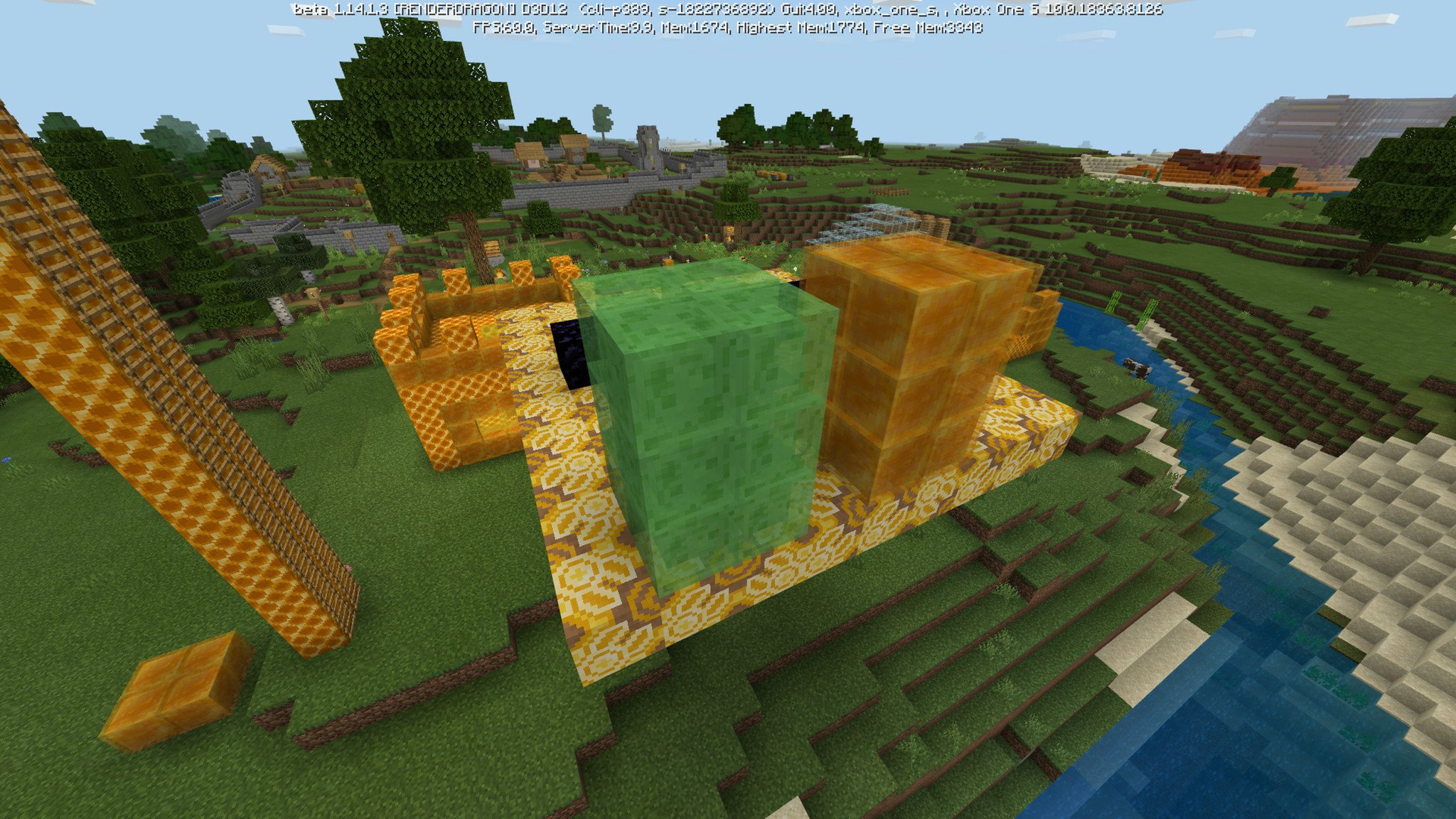
One of the most significant limitations of redstone is that slime blocks and honey blocks are both only capable of attacking to 12 adjacent blocks simultaneously. This limits the size and complexity of potential creations considerably. However, since honey blocks and slime blocks are different in just the right ways, you can use them in conjunction to surpass the block limit set by the game!
This means you can alternate between the two to create much larger flying machines or absolutely massive doors powered by pistons. I'm sure someone will figure out how to make a floor that folds away to reveal some hidden structure or treasure like it's straight from an Indiana Jones movie.
Using honey blocks in other building ideas
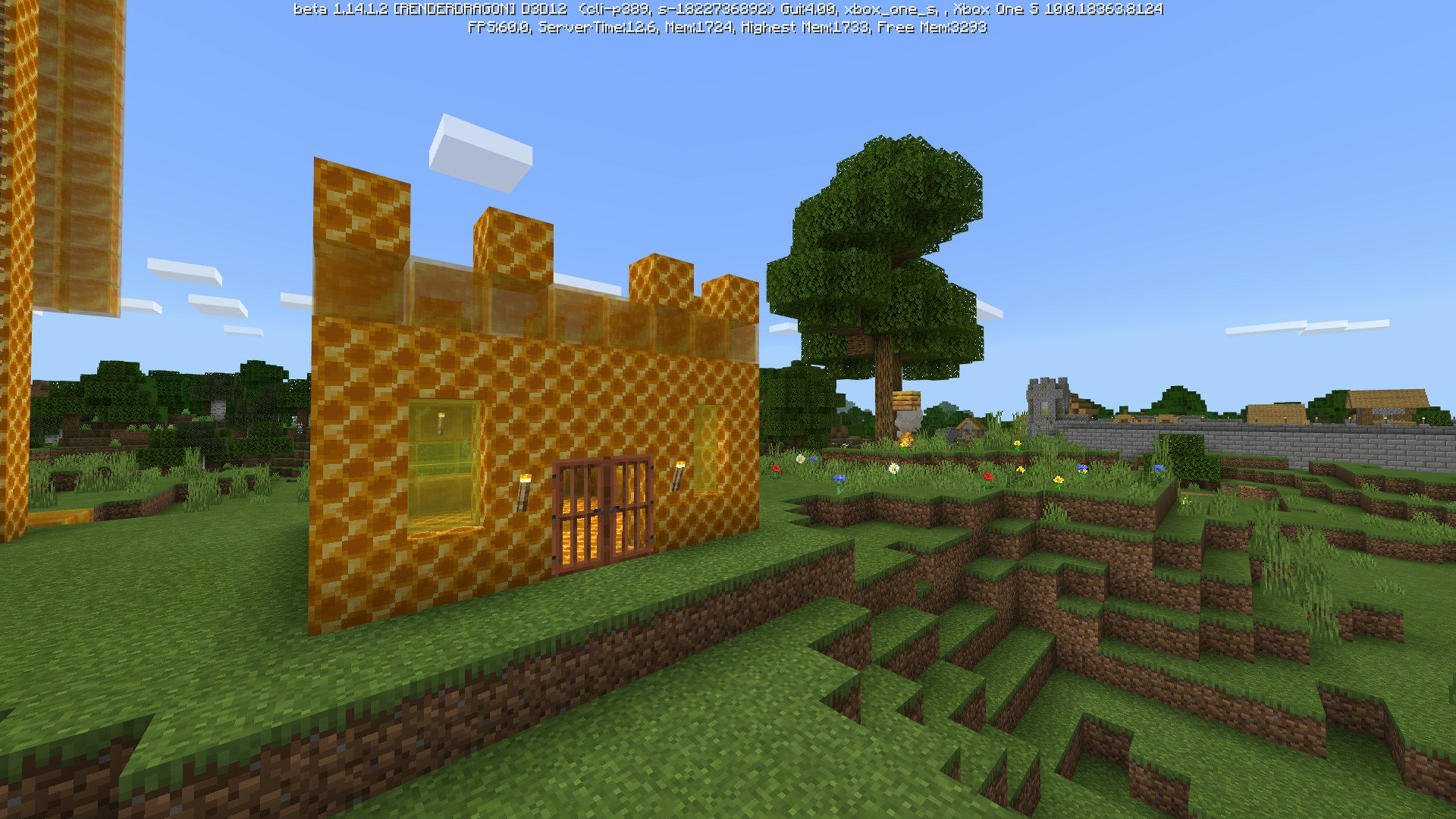
It's clear that honey blocks have a ton of applications in regards to redstone, but not everyone is a redstone fanatic out to recreate entire video games inside of Minecraft. Because of the other traits that honey blocks have, they can be useful for plenty of other things.
From decorative pieces to purely functional uses, here are some of the things you can do with honey blocks:
Building houses and other structures
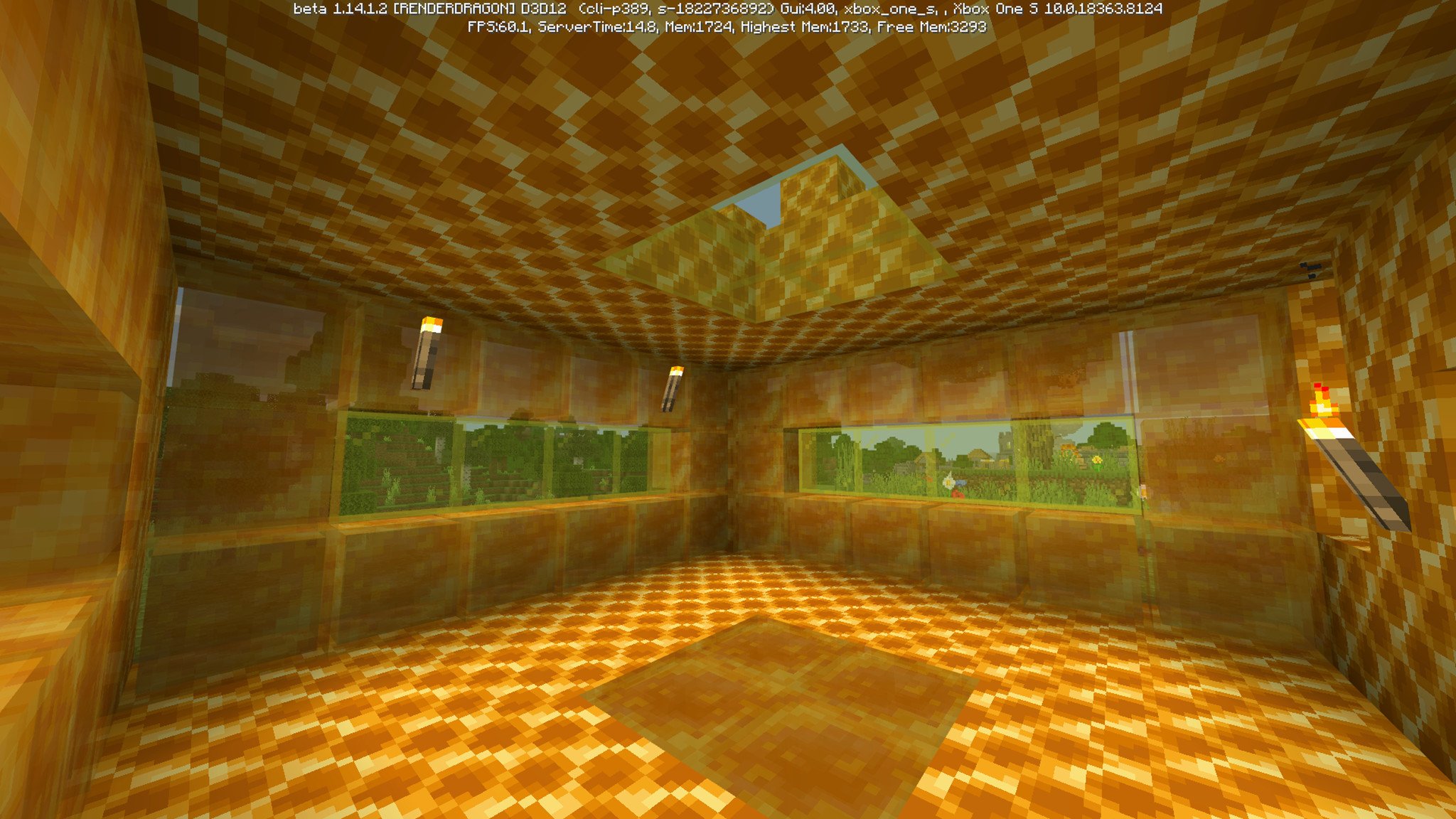
This one's a bit more silly, but can you imagine? An entire home constructed primarily out of a sticky substance that impedes mobility and is a hindrance to anyone who lives there! But it looks beautiful, and it'll certainly be different than whatever your neighbor is building. Because of the nature of honey blocks, you'd be forced to get creative with stairs and ways of getting around with some semblance of speed.
Honey blocks are placeable just like any other block, though, so you have full creative freedom to make some weird things. I built an elementary house out of honey blocks and honeycomb blocks because I'm unoriginal. Still, given enough time, I could create an abstract house devoid of stairs or any obvious way to traverse floors. Also, you'd never have to worry about being hungry, since your entire house is edible.
Animal pens and perimeter defense
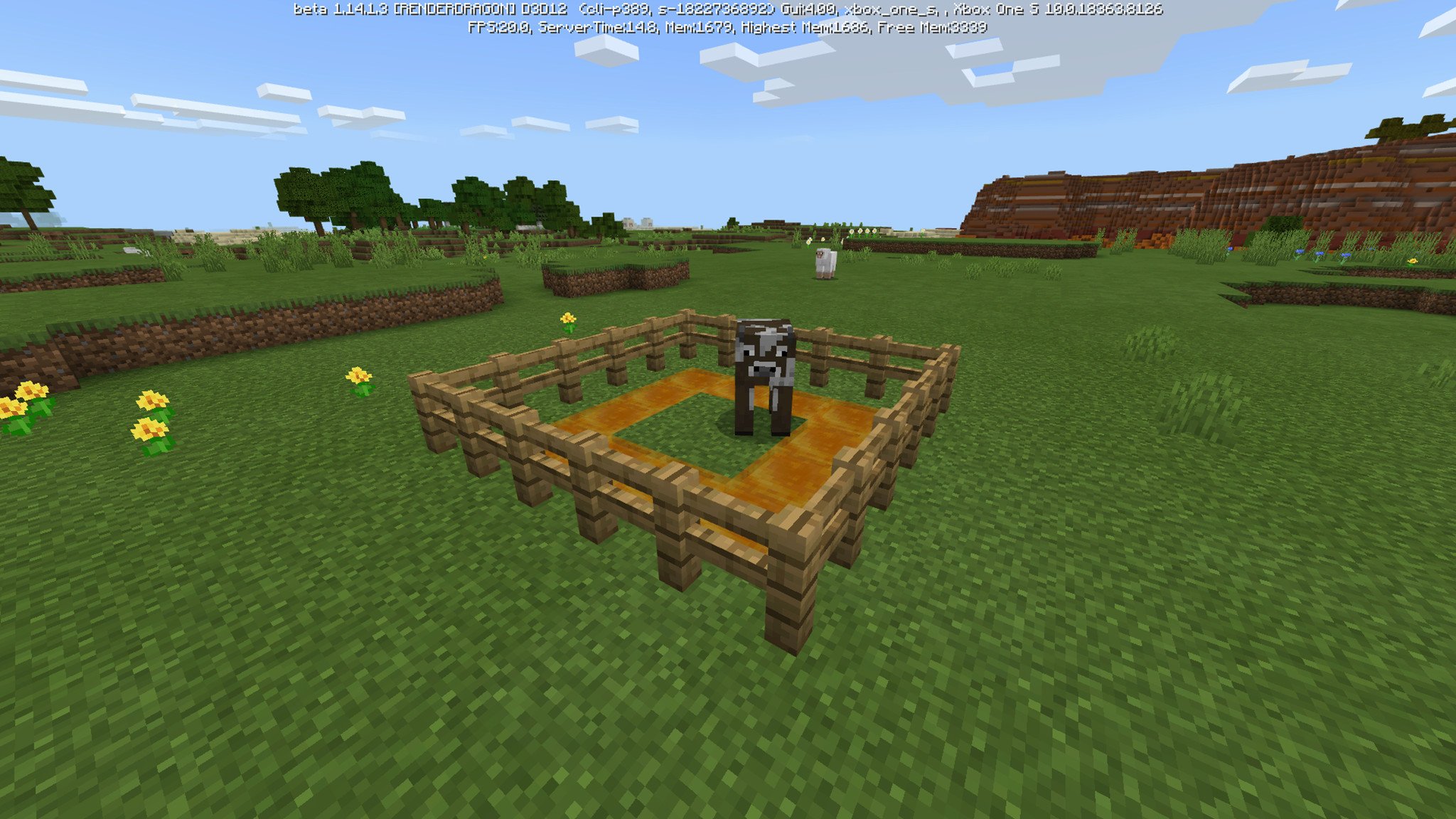
Corralling animals in Minecraft has always been predictable. A bit of floor and a wooden fence does the trick. If you're feeling adventurous, maybe you substitute your fence with cobblestone walls. Fortunately, honey blocks shake up the formula. They restrict jumping, so you can line any animal pen with honey blocks. After that, you can use anything you want to build your wall. In the future, Mojang says it intends to make it so that mobs generally avoid walking on honey blocks if possible.
An evolution of the previous idea, you can use honey blocks to increase the security of your home or area. More than that, you wouldn't have to obstruct your view of the surrounding landscape with giant walls. A simple lining of honey blocks placed before a one block high wall would do the trick. Eventually, it should prove to be a natural deterrent for any hostile mobs. It might require a lot of honey blocks, though, so you'll want to get to work breeding those bees.
Parkour/obstacle courses
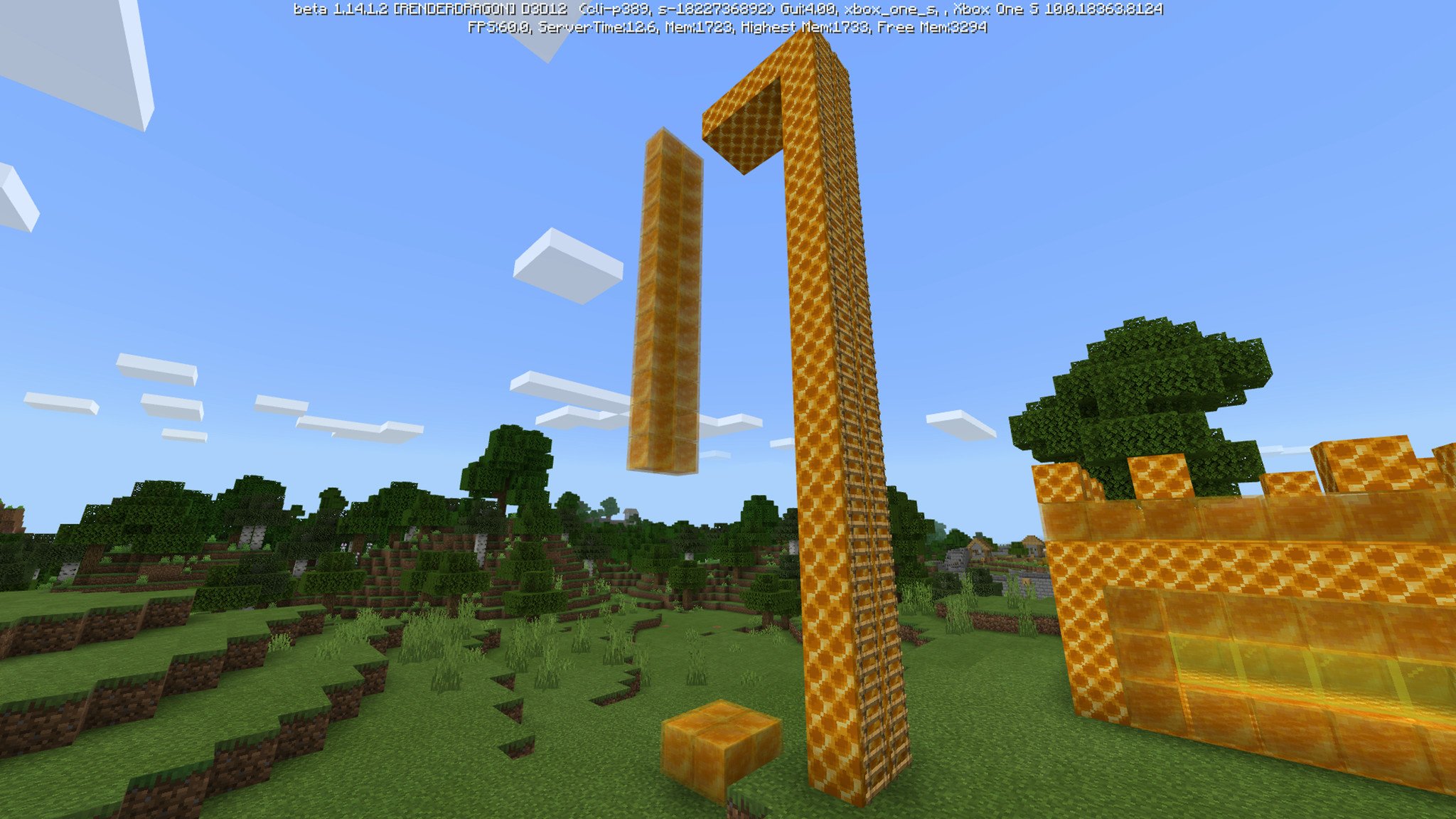
The ability to restrict player movement at your behest? A new mechanic that allows for actual wall riding? A way of catching items and players in mid-air? Yeah, honey blocks can do all of that and more. If you want to build something fun for you and your friends to do, honey blocks are a fantastic option for building extreme obstacle courses. This is already a popular game style for online Minecraft, and honey blocks should allow those map creators to take their levels to the, well, next level. Anyone up for some parkour?
Plenty of people have already gotten their hands on honey blocks as well, including Reddit user tubbylumcin who built this pretty awesome parkour course using a combination of honey blocks and slime blocks for a very vertical and abstract obstacle course that shows just how much potential these honey blocks have.
Elevators
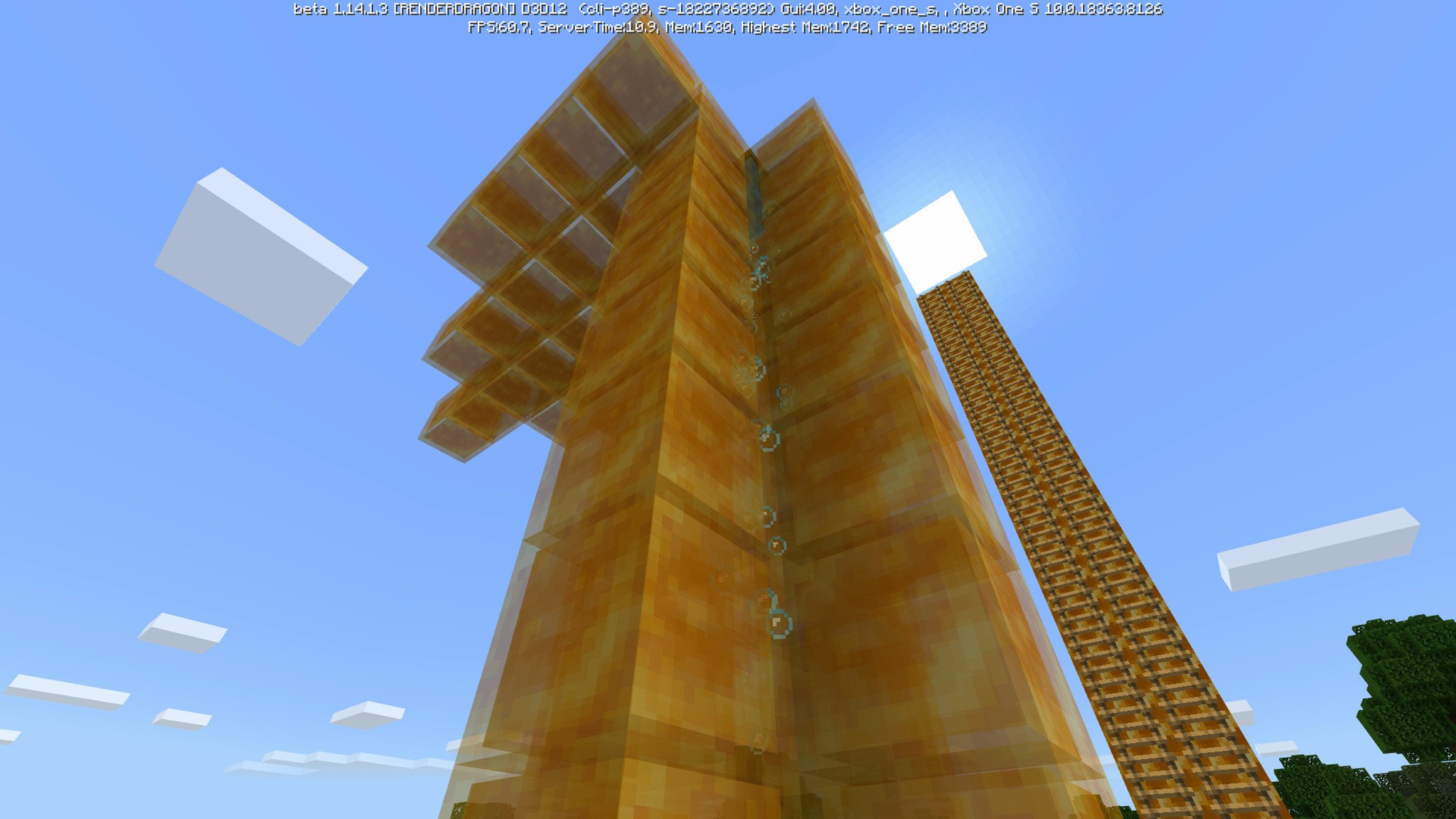
Elevators have existed in Minecraft in a variety of forms for a while now. From using soul sand and magma cubes to alter the flow of water all the way to just jumping from minecart to minecart, plenty of people have found new ways to elevate themselves quickly in Minecraft. Well, with honey blocks, that list has now grown by one.
Because honey blocks are smaller in size than other blocks (you sink into them a little bit), you can still be affected by things around the honey block. This means building a hollow pillar of honey blocks with soul sand making up the bottom and water filling the center creates a super convenient elevator that's easy to get off whenever you need to. You stick to the honey block as you rise, and don't get swept up in the current.
Get your build on

Honey blocks are one of the more exciting additions to Minecraft in recent memory, especially those with the patience and skills to build mind-boggling creations using redstone, or to servers that specialize in obstacle courses to test the physical limits of any Minecraft player. Even those who design and construct magnificent and weird structures can benefit from the honey block.
These ideas aren't enough to satiate your honey block craving? Mojang also joined in on the fun and created their own list of neat ideas to showcase the power of the honey block. There are some excellent additions to this list that didn't make my own, and some similarities as well.
What do you think about the honey block? Have a few ideas for it of your own that should be on our list? Sound off in the comments!
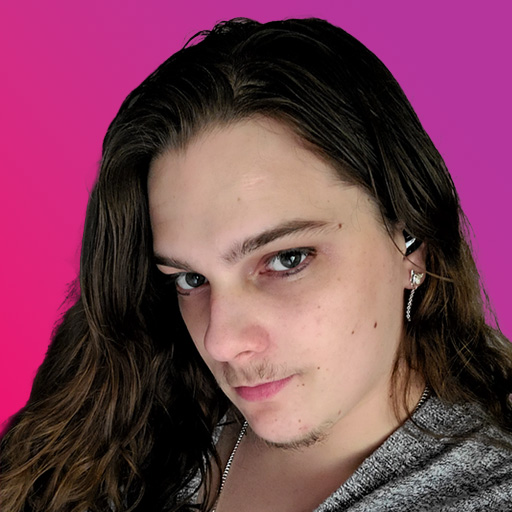
Zachary Boddy (They / Them) is a Staff Writer for Windows Central, primarily focused on covering the latest news in tech and gaming, the best Xbox and PC games, and the most interesting Windows and Xbox hardware. They have been gaming and writing for most of their life starting with the original Xbox, and started out as a freelancer for Windows Central and its sister sites in 2019. Now a full-fledged Staff Writer, Zachary has expanded from only writing about all things Minecraft to covering practically everything on which Windows Central is an expert, especially when it comes to Microsoft.
